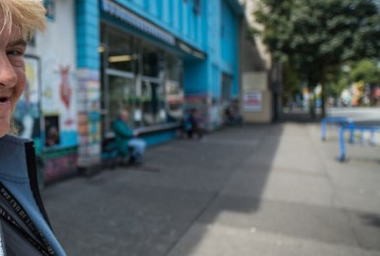Peer Reference Group helped shaped new model of care in DTES
This is the third in a series of articles on work implemented in the DTES through the 2nd Generation Strategy. We’re also highlighting some of the people who helped make this possible. This article looks at the impact of the Peer Reference Group.
Peer Advisors are people with lived experience of the DTES who have used VCH services. One of the main objectives of having a Peer Reference Group was to improve decision making and service design through the planning and implementation stage. “The team reviewed over 80 applicants before picking the top 12 peer advisors for the Peer Reference Group,” says Rachael McKendry, Project Manager. “They provided feedback on our various initiatives that ranged from the design of new spaces to how services are delivered, made recommendations and helped identify solutions.”
The primary goal of the 2nd Generation Strategy was to improve the experience and health outcomes of clients. “We wanted to create a system that was better designed to meet the needs of the client, making it easier for them to have an ongoing connection to our services and supports,” says Bonnie Wilson, Director, Inner City and MHSU, VC. “The peers helped us understand what some of those needs might be and how we could improve access.”
VCH News sat down with two of the peers
Daniel made the comment that peers were like “interpreters in a foreign land”. He first found himself on the streets and homeless at age 9. He is almost 60 now and lives in Woodward’s housing. To say he understands the DTES would be an understatement.
It’s that understanding that VCH was looking for. Daniel was on the committee for the DTES Connections, a low barrier addiction service in the neighbourhood. “We gave advice on the reception area,” explained Daniel. “Having a glassed-in reception where clients have to talk to staff through a small hole, or having uniformed security guards at the door isn’t welcoming and gives the impression that all DTES clients are dangerous.”
The peers also gave advice on the culture of the DTES. “There is a large Aboriginal population in the community and employees need to be sensitive to the history of residential schools and the trauma that many people here have gone through. It’s about being more compassionate and human,” adds Daniel.
Brenna, another peer from the group, doesn’t currently live in the DTES but she has used the services in the past. Brenna was involved in the consultation around the Heatley CHC. “I feel so proud of the space – it is such a functional space for the DTES,” she said. “It is laid out with the community in mind.”
She explained about having the bathrooms close to the front so clients feel safe, and having them as an individual room vs one large bathroom with a number of stalls so clients can have privacy and safety. “There aren’t many places in the DTES where a person can feel completely safe,” she said. She also talked about the cedar room – a place where smudging is possible, and the fact that an elder is embedded in the clinic. “I feel very proud of how much VCH integrated and prioritized our advice into the changes they made.”
Other examples of recommendations made by peers include a shopping cart lock-up out front that is monitored by a peer to ensure they aren’t stolen (this is in the planning stage, and expected to be installed in the spring). There is also a peer greeting clients as they come in – helping them to feel safe and comfortable.
Both Daniel and Brenna, independent of each other, said how impressed they were by the fact that VCH used peer advisors and actually took what they said into consideration and implemented many of their recommendations.
Evaluating the Peer concept at VCH
Peer leadership and participation is a cornerstone of the non-profit community in the DTES and VCH wanted to learn from this to strengthen its own programs. So, aside from the Peer Advisory Group, Peers with lived experience have also been embedded within many DTES programs and services. It’s also been a positive experience for our Peer Advisors as they’ve received training and made professional connections to support future employment.
“We are currently evaluating the group from the Advisors’ perspectives and from the peer allies’ perspectives,” explains McKendry. “We’re identifying lessons learned to create a toolkit to support people within VCH who want peer advisors to inform their work.”
Other articles in the series include: DTES Women’s ICMT celebrate one year anniversary and the Opening of Heatley CHC marks New Model of Care in the DTES
Background information: After five years of intensive consultation, planning and implementation through the DTES 2nd Generation Strategy, Vancouver Community substantially changed the way they provide services in the DTES to improve the quality of life and health of people who live in the DTES. For more information, visit the DTES web site.

